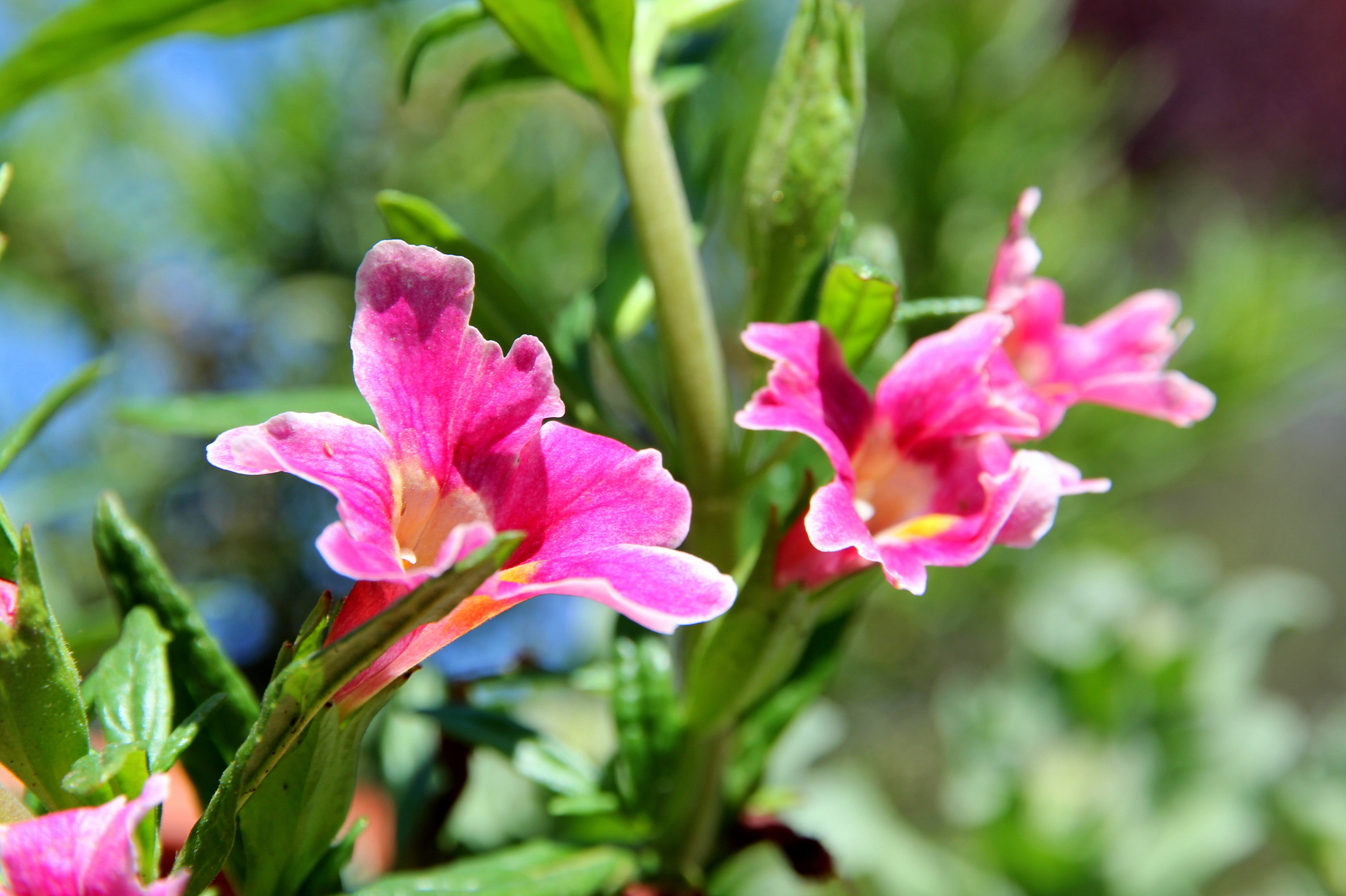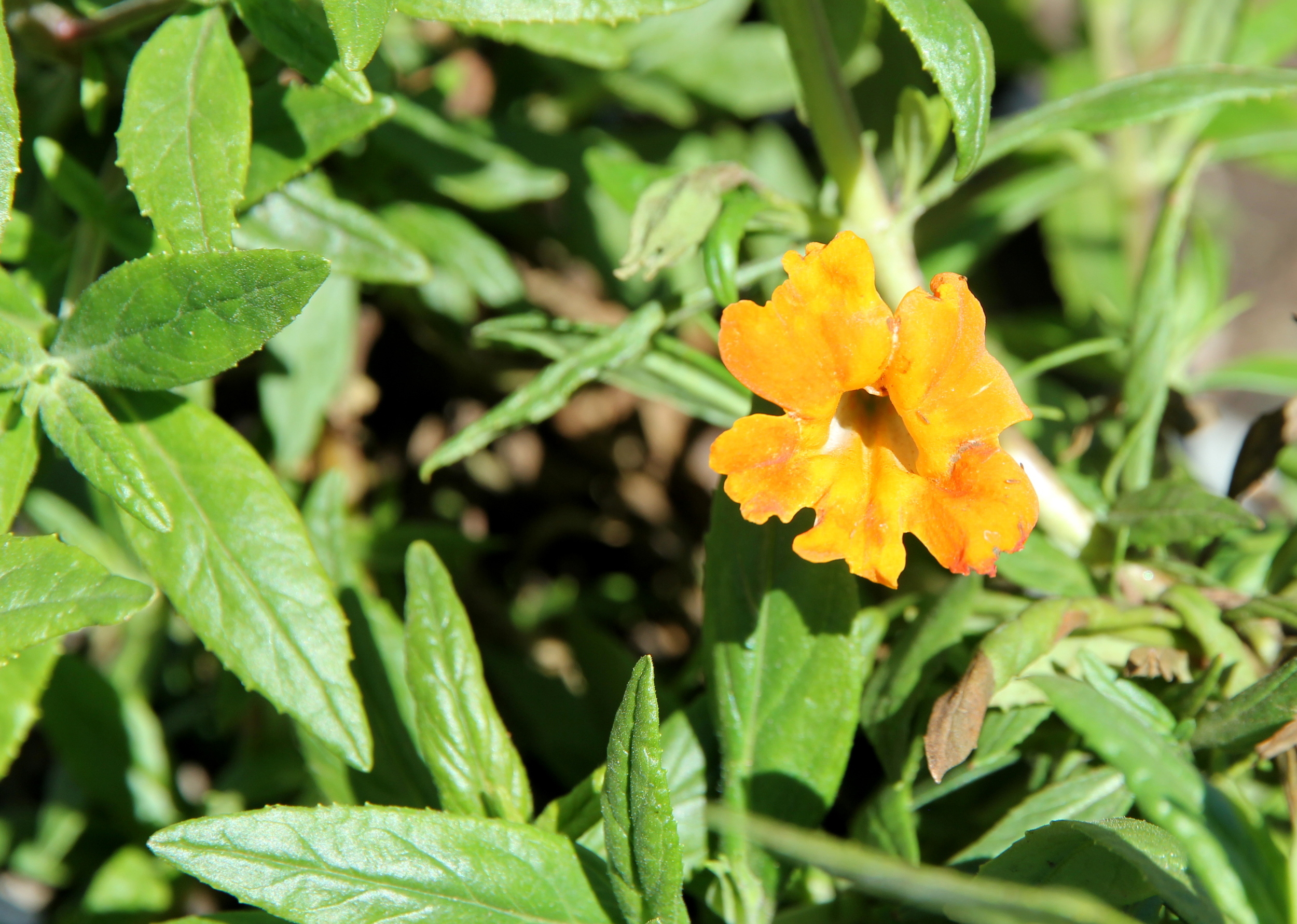Mimulus 'Jelly Bean'
Jelly Bean Monkeyflower
This is a cultivar of Mimulus aurantiacus parentage available in a wide variety of colors. It forms a compact shrub 2-3 feet tall by 1-2 feet wide with glossy, dark green leaves, and numerous frilly flowers. Grows best in full sun or light shade, with well-drained soil, and blooms nearly year-round in coastal gardens. It is hardy to 20° F, and requires little water or fetilizer once established.
Monkeyflowers are so-called for their flowers' resemblance to a monkey's face. The name Mimulus stems from the Greek and Latin words Mimos and Mimus, meaning "imitator."
Wildlife value: Hummingbirds favor the flowers, and other birds eat the seeds. Large and colorful hemipterans (insects with piercing and sucking mouth parts) may be found inside Mimulus flower tubes. Caterpillars of the Common Checkerspot and Buckeye butterflies eat the foliage, and adult butterflies sip nectar from the flowers.
Other uses: Young Mimulus leaves may be eaten in salads (though, they do not taste like Jelly Beans). The entire plant is edible, but is often bitter unless well cooked. Mimulus plants tend to concentrate sodium chloride and other salts in their leaves and stem. Native Americans and early settlers sometimes used the plant as a salt substitute to flavor wild game.


